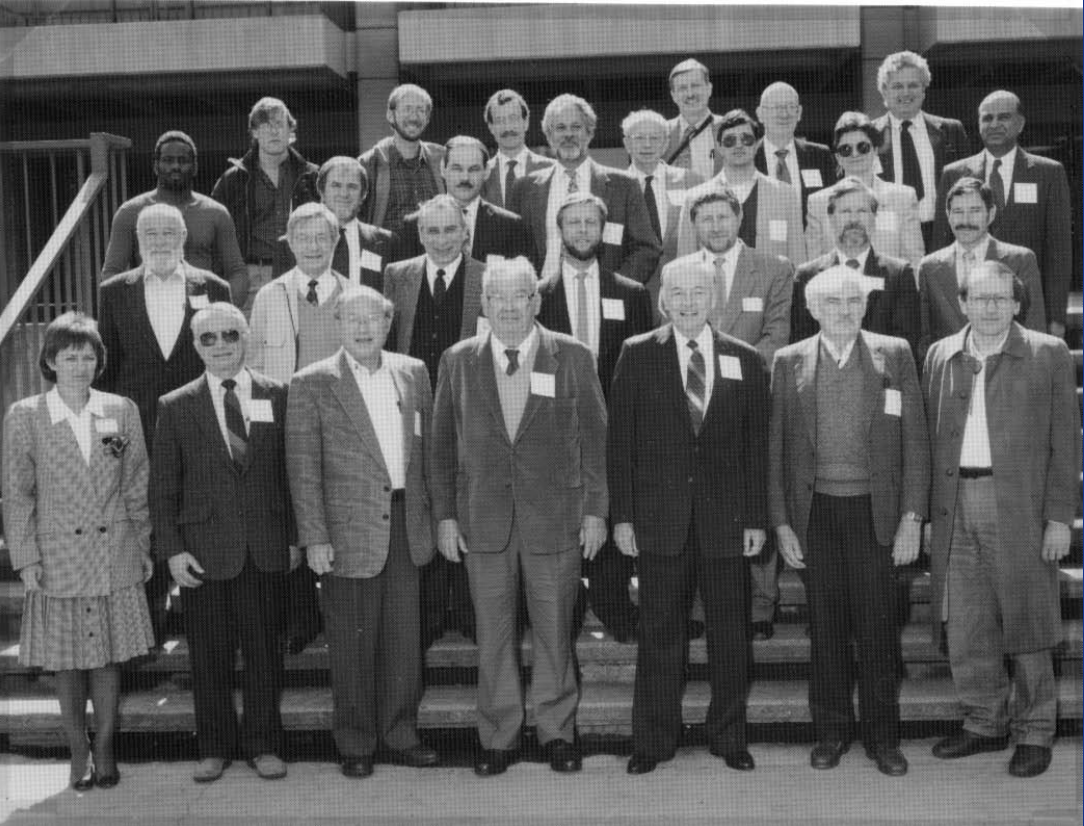Stan played a community organizing role in the Mössbauer world
The modest hoopla that accompanied the fiftieth anniversary of the Mössbauer effect had two peaks, in 2007, a half century after its discovery, and in 2012, a half century after its discoverer's recognition with the 1962 Nobel Prize.
As part of the first wave, John G. Stevens gave a presentation 50 Years of the Mössbauer Effect to the international Mössbauer meeting in Kamput, India, and then later published an annotated version in the September 2008 edition of Mössbauer Spectroscopy Newsletter.
That presentation includes numerous mentions of Stan Ruby, including several that reveal a side of him that we may not have been familiar with. Besides his scientific work, he instigated the creation of community resources that benefitted the field as a whole.
In the first instance, he recognized that there was a need for a different kind of Mössbauer conference and proposed the idea to a lab equipment supplier, which ran with it. The Mössbauer Effect Methodology (MEM) conference became an important event as the field boomed in its second decade.
In the mid-60’s Stan Ruby approached Irwin Gruverman of NENC, the New England Nuclear Corporation, suggesting that NENC sponsor a one-day Mössbauer Effect Methodology conference (MEM) in association with the winter meeting of the APS. NENC had become a principal supplier of radionuclides and ME sources and absorbers here and abroad. The series began on January 26, 1965, in New York City with free registration for all 250 participants. The 15 papers were presented in an afternoon/evening format. As needed, NENC paid the expenses of the chosen speakers, who generally were from labs in the USA. A pre-Symposium dinner the night before the presentations became an effective vehicle for the speakers and the organizers to meet each other. Manuscripts were published in Mössbauer Effect Methodology Volume 1 (through Volume 10) by Plenum Press, New York, edited by I. Gruverman. The meeting was a huge success, and it was subsequently held annually until 1976 (except 1972 and 1975).
In the second example, Stan recognizes the need for a specialized Mössbauer database publisher, and instigated the founding of the Mössbauer Effect Data Center, which is still in existence today. John Stevens, together with his wife Virginia, directed the center.
With the prodding and support of Stan Ruby, the Mössbauer Effect Data Center was established at the University of North Carolina at Asheville with a modest grant of $2,800 from the North Carolina Board of Science and Technology. The resources of Argonne National Laboratory were made available during these early years at the Center. Other funding during this time came from the National Bureau of Standards’s National Standard Reference Data Systems and the National Science Foundation, In 1969, MEDC developed one of the first databases used in the scientific community using IBM Assembler code.
There are many other mentions of Stan in Stevens' presentation, but I picked these two because they show how our father acted as a gadfly in the community to cause the formation of needed resources like conferences and publications.

